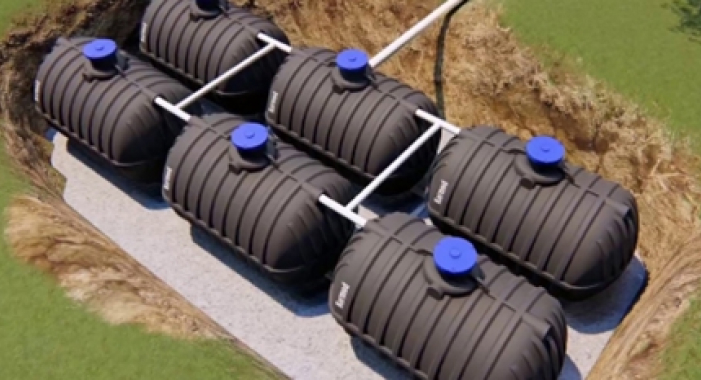
Storage products are structures used for storing, preserving, and utilizing water and various contents, both above and below the ground. Among these, polyethylene water tank models are commonly used. These storage products can be produced in various sizes and shapes. Some may have a capacity of just a few hundred liters, while others can hold several million liters. Water stored in these tanks is typically used for various purposes, including drinking water, agricultural irrigation, industrial use, and fire suppression.
Especially in rural areas, it's crucial for ensuring water supply due to the distance from water sources. Moreover, in arid regions and places experiencing water scarcity, it's an essential asset when water resources are limited. A colored tank can help keep the contents warm during the winter months. Colored material can retain a portion of the heat entering or exiting the tank. The temperature depends on the heat transfer properties of the tank material and the temperature of the liquid inside. Additionally, proper insulation is essential for maintaining the temperature of the liquid inside the tank. Tank insulation helps protect the liquid from environmental conditions and helps maintain internal temperature. Therefore, tank design, material selection, and insulation arrangements are factors affecting the temperature of the liquid inside the tank.
Can a Water Tank Be Colored?
Storage tanks produced using polyethylene can indeed be colored. Polyethylene is generally produced as white or transparent material, but color pigments can be added to give the tanks color. Color pigments are added to polyethylene granules during production, either when the granules are melted or during injection molding or extrusion processes.
Colored polyethylene tanks are usually more resistant to light damage. Therefore, adding color pigments to these tanks is recommended to maintain the quality of the stored water. Additionally, colored tanks can be a more aesthetically pleasing option and can have an environmentally friendly design. Moreover, different-colored storage products make it much easier to categorize different contents. However, when coloring polyethylene tanks, it's crucial to add color pigments in the correct proportions during the manufacturing process. Otherwise, it can alter the material's properties or harm the water inside the tank. Therefore, quality control and the correct addition of pigments are essential when producing colored polyethylene tanks.
What Other Advantages Do Colored Tanks Offer to Users?
Coloring a tank offers various advantages. Among these, resistance to UV rays is prominent. Colored tanks are more resistant to UV rays because the color helps protect the quality of the water in the tank and prolongs the material's lifespan. Additionally, colored tanks can be designed to be compatible with existing environmental conditions. Color selection can harmonize with the landscape or architectural designs around the tank, creating a cohesive aesthetic.
Colored tanks can also help reduce water temperature. Especially black or dark-colored tanks absorb more heat from the sun and help lower the water temperature inside the tank. Colored water tank products offer a more aesthetic appearance compared to white or transparent tanks. This can improve the overall look of the tank's surroundings and contribute to a more attractive design. The addition of color pigments can prevent certain harmful substances from entering the water inside the tank. For example, UV stabilizers are additives included to protect the water quality in the tank. For these reasons, coloring a tank is an effective way to enhance tank performance and provide various advantages. However, correct material and color selection are essential; otherwise, tank performance and water quality may be affected.


 EN
EN
 DE
DE
 FR
FR
 IT
IT
 ES
ES
 PT
PT
 RU
RU
 AR
AR
 BG
BG
 SR
SR
 GR
GR
 SQ
SQ
 RO
RO
 PL
PL
 HU
HU
 CZ
CZ
 HR
HR
 AZ
AZ
 GE
GE
 AM
AM
 IL
IL